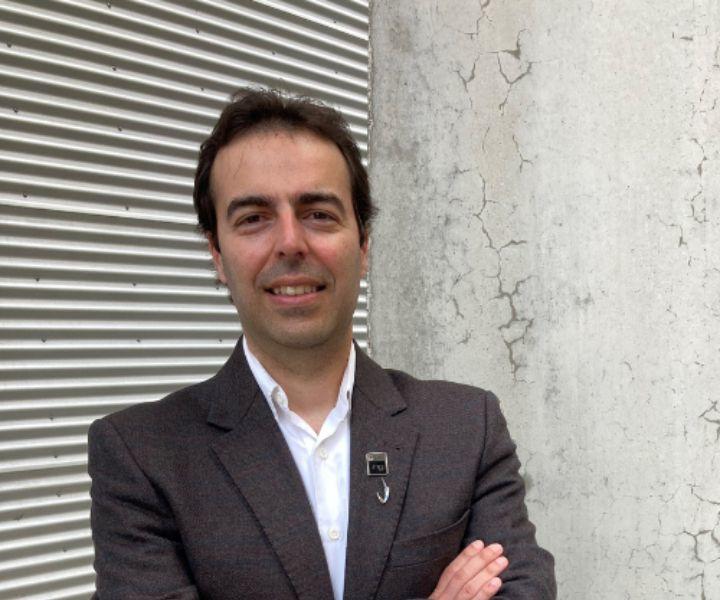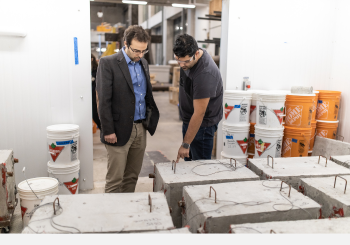Concrete is made by mixing aggregates, such as sand and rocks, with water and cement. This common material is used in almost every building, bridge, road, or structure built in our society, so much so that it is the most consumed product on the planet, after water. However, our reliance on concrete has major consequences.
“A large proportion of critical infrastructure worldwide is currently deteriorated or deteriorating,” says Professor Leandro Sanchez, who is a prominent international researcher specializing in concrete.
Professor Sanchez has always been fascinated by infrastructure and how it connects people to one another. He has also extensively studied one of the most harmful mechanisms that contributes to concrete deterioration, namely internal swelling reactions (ISRs).
“ISRs are mechanisms that are triggered inside the bulk volume of concrete, inducing expansion and deterioration,” he explains. ISRs can be caused by chemical reactions between different materials present in the concrete microstructure, or by a physical reaction that makes the water present in the mix swell upon freezing. No matter the cause, ISRs cause visible deterioration in concrete structures and affect their durability.
Unfortunately, many of today’s key infrastructures are deteriorating due to ISRs, and this problem is exacerbated by the harsh climate we face in Canada. In addition, once a structure is affected by ISRs, there is no easy solution: “[An] ISR is a very harmful deterioration mechanism which, once triggered, is extremely difficult, and perhaps impossible, to handle,” says Professor Sanchez.
In his recent book, Professor Sanchez focuses on the subject in depth, explaining how “the national and international community in the field agree that the most efficient weapon against ISR deterioration in new concrete infrastructure is prevention.”

“The most efficient weapon against ISR deterioration in new concrete infrastructure is prevention.”
Dr. Leandro Sanchez
— Associate professor
Beyond researching ways to prevent ISRs in future concrete projects, Professor Sanchez is also working on increasing sustainable practices in future concrete construction projects.
He explains that “Portland cement, an essential concrete ingredient, is responsible for over two-thirds of embodied energy of concrete, which generates around 8% of global greenhouse gas emissions.” This represents an enormous environmental impact that the Government of Canada, with help from researchers like Professor Sanchez and industry stakeholders, is committed to reducing. The goal is for the infrastructure industry is to reach net-zero carbon emissions by 2050.

To contribute to this objective, Professor Sanchez is studying options that could replace Portland cement in concrete by experimenting with recycled and innovative low-carbon materials, while also testing the long-term durability of these options. The aim is to create a new formula, one that is less detrimental to the environment and also less prone to deterioration mechanisms such as ISRs.
Our reliance on concrete is far from over. Research, like that conducted by Professor Sanchez, allows us to imagine a future where our infrastructure is not only stronger, but also greener.
Are you interested in collaborating with Professor Leandro Sanchez? Get in touch with him by email.


